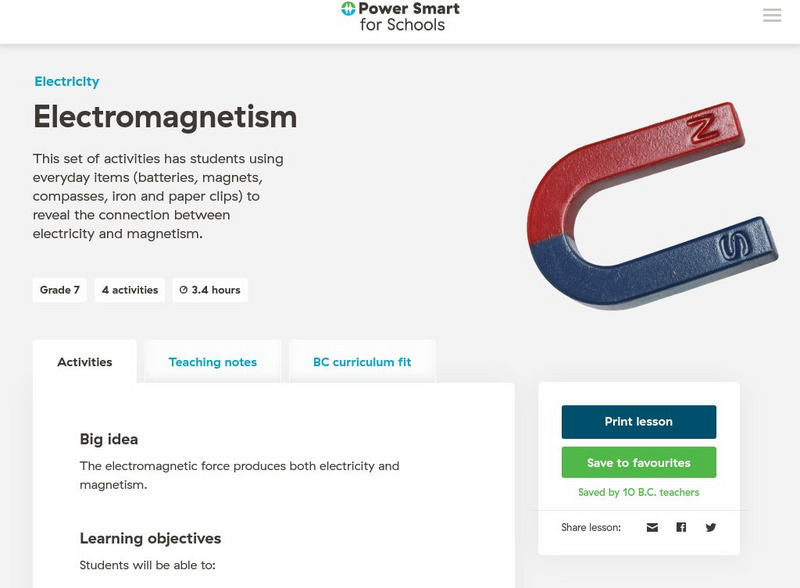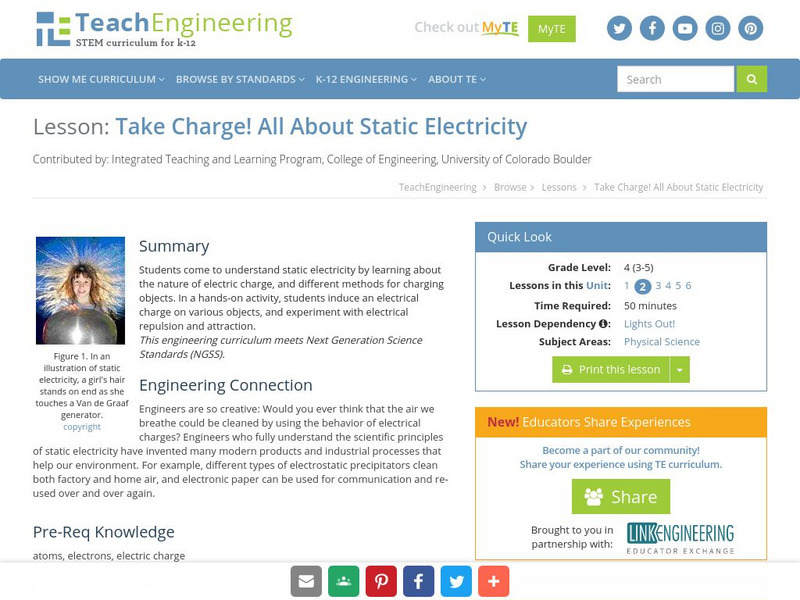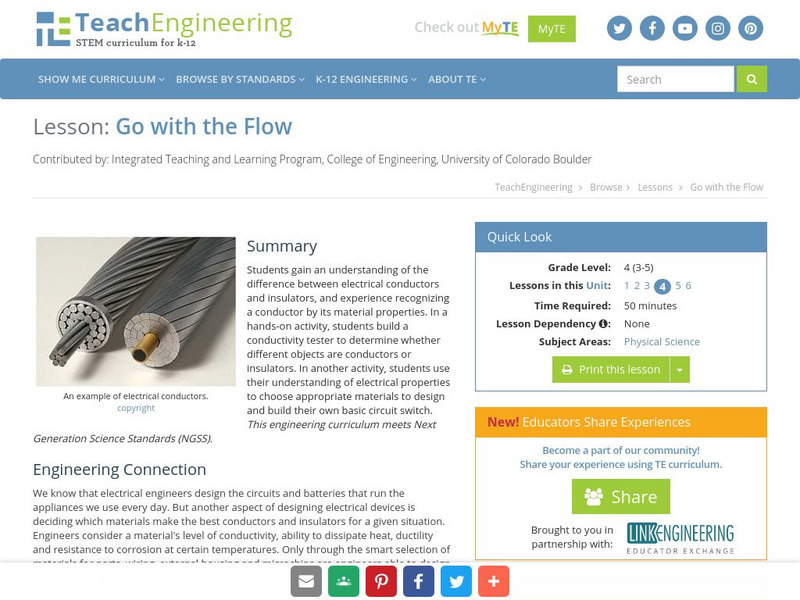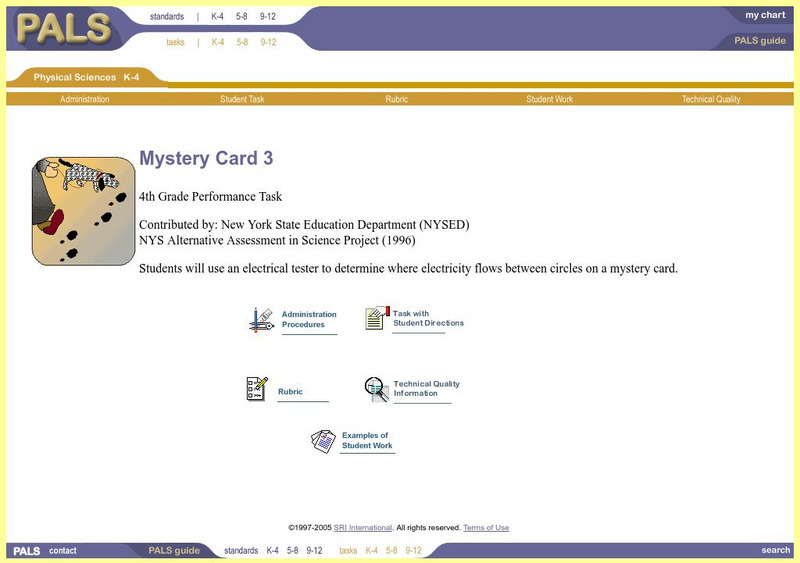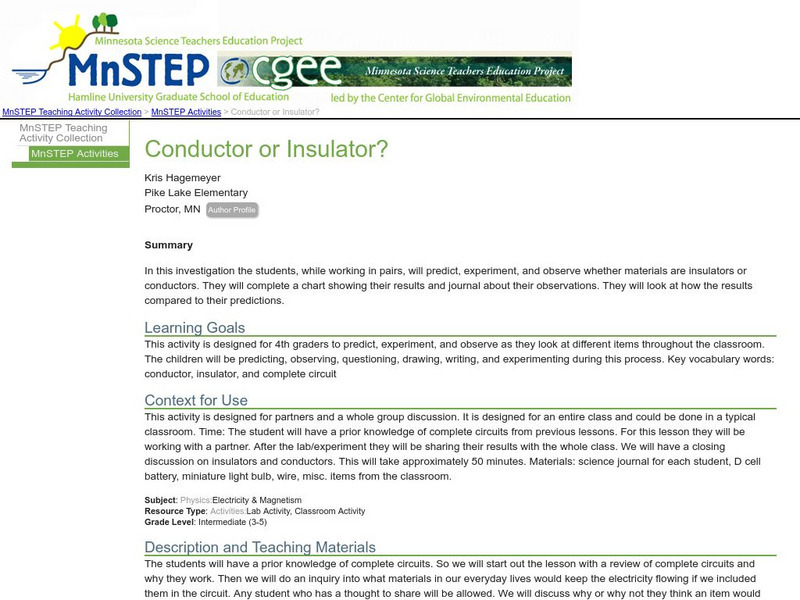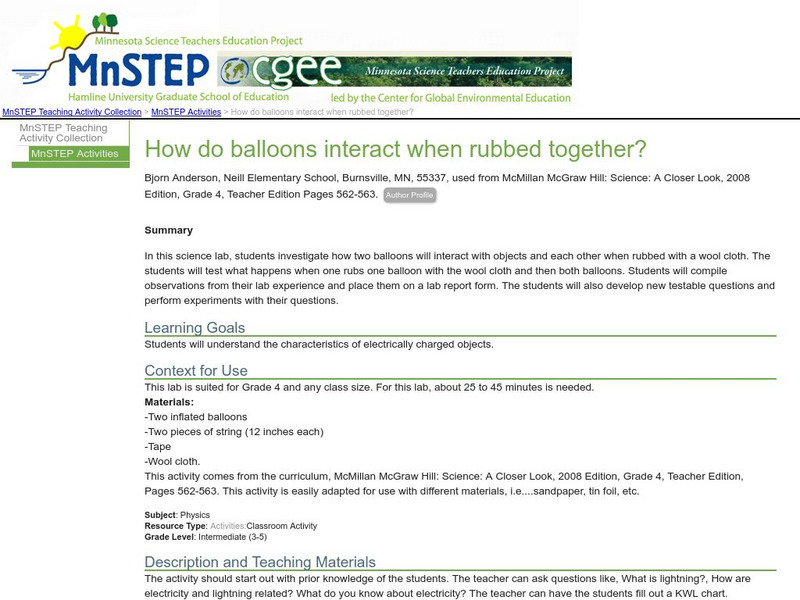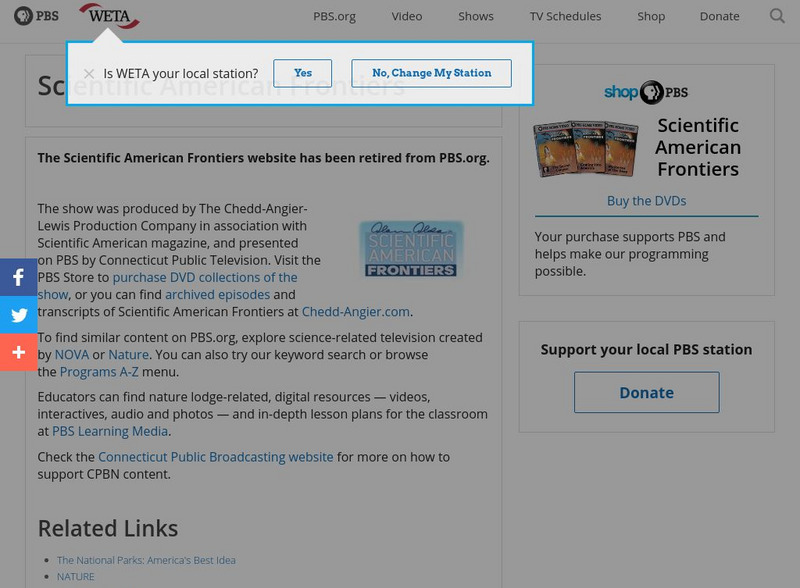Oak Ridge National Laboratory
Ornl: Teacher's Guide Superconductivity for High School Students
This site from the Human Genome Project provides a large collection of facts and information, demonstrations, experiments and project ideas. Written for teachers but easily adaptable for any type of student work. A good site to check out...
Other
Bc Hydro: Power Smart for Schools: Electromagnetism
This set of activities has middle schoolers using everyday items (batteries, magnets, compasses, iron and paper clips) to reveal the connection between electricity and magnetism. Ideally, students will already have experience building...
Science Education Resource Center at Carleton College
Serc: Investigating Magnetism
For this physical science lab, students will investigate ways to control an electromagnet, how adding coils of wire can change the magnet, and the differences between an electromagnet and a bar magnet. Students will explain in their...
TeachEngineering
Teach Engineering: Get Charged!
Students are introduced to the idea of electrical energy. They learn about the relationships between charge, voltage, current and resistance. They discover that electrical energy is the form of energy that powers most of their household...
TeachEngineering
Teach Engineering: Take Charge!
Students come to understand static electricity by learning about the nature of electric charge, and different methods for charging objects. In a hands-on activity, students induce an electrical charge on various objects, and experiment...
TeachEngineering
Teach Engineering: Go With the Flow
Students gain an understanding of the difference between electrical conductors and insulators, and experience recognizing a conductor by its material properties. In a hands-on activity, students build a conductivity tester to determine...
SRI International
Performance Assessment Links in Science: Mystery Card 3
Straightforward introduction to electrical circuits using minimal materials and time. Students learn about the basics of electrical circuits by experimenting with "mystery cards" -- index cards with hidden aluminum foil used to conduct...
Science Education Resource Center at Carleton College
Serc: Conductor or Insulator?
In this investigation the students predict, experiment, and observe whether materials are insulators or conductors.
Science Education Resource Center at Carleton College
Serc: Investigating Batteries: Building an Electrolytic Cell
In this inquiry, students will attempt to build an electrolytic cell which will cause a bulb to turn on then diagram the set-up. Included in this lab, students will experience voltage, solve a problem using the Nernst equation, and...
TryEngineering
Try Engineering: Series and Parallel Circuits
The core of this lesson is simple circuits and the differences between parallel and series circuit design. Students perform experiments to test the differences between the two circuit designs using low voltage light bulbs.
Science and Mathematics Initiative for Learning Enhancement (SMILE)
Smile: Qualitative Coulomb's Law Lesson
A detailed activity for helping students to qualitatively experience the force versus distance relationship of Coulomb's law.
Science Education Resource Center at Carleton College
Serc: How Do Balloons Interact When Rubbed Together?
Young scholars investigate how two balloons interact with objects and each other when rubbed with a wool cloth. The students will also develop new testable questions and perform experiments to further their learning.
Science and Mathematics Initiative for Learning Enhancement (SMILE)
Smile: Electrostatics
From the Science and Mathematics Initiative for Learning Enhancement project at the Illinois Institute of Technology. A teacher lesson plan which includes several Van de Graaff generator demonstrations and some station-style labs....
Orca Book Publishers
Orca Book Publishers: Five Stars for Emily Teaching Guide [Pdf]
Five Stars for Emily, a novel written by Kathleen Cook Waldron, looks at a young girl's experience of leaving modern comforts behind and going to live in a log cabin without electricity. This teacher's guide includes a book summary,...
PBS
Pbs Teachers: Scientific Breakthroughs in Germany: Curing the Storm in the Head
Explore medical breakthroughs in treating epilepsy. Discover how negative and positive particles behave in an electrically neutral environment, and perform an experiment to demonstrate how the human body can conduct electricity.



